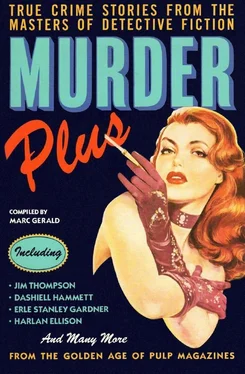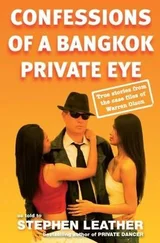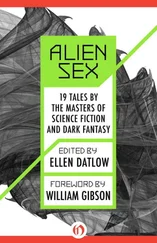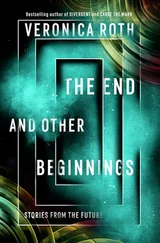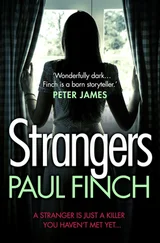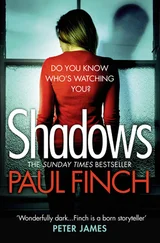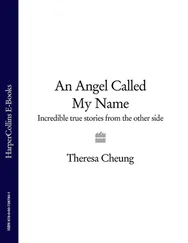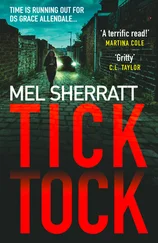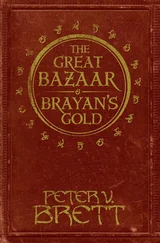Харлан Эллисон - Murder Plus - True Crime Stories From The Masters Of Detective Fiction
Здесь есть возможность читать онлайн «Харлан Эллисон - Murder Plus - True Crime Stories From The Masters Of Detective Fiction» весь текст электронной книги совершенно бесплатно (целиком полную версию без сокращений). В некоторых случаях можно слушать аудио, скачать через торрент в формате fb2 и присутствует краткое содержание. Город: New York, Год выпуска: 1992, ISBN: 1992, Издательство: Pharos Books, Жанр: Детектив, на английском языке. Описание произведения, (предисловие) а так же отзывы посетителей доступны на портале библиотеки ЛибКат.
- Название:Murder Plus: True Crime Stories From The Masters Of Detective Fiction
- Автор:
- Издательство:Pharos Books
- Жанр:
- Год:1992
- Город:New York
- ISBN:978-0-88687-662-3
- Рейтинг книги:4 / 5. Голосов: 1
-
Избранное:Добавить в избранное
- Отзывы:
-
Ваша оценка:
- 80
- 1
- 2
- 3
- 4
- 5
Murder Plus: True Crime Stories From The Masters Of Detective Fiction: краткое содержание, описание и аннотация
Предлагаем к чтению аннотацию, описание, краткое содержание или предисловие (зависит от того, что написал сам автор книги «Murder Plus: True Crime Stories From The Masters Of Detective Fiction»). Если вы не нашли необходимую информацию о книге — напишите в комментариях, мы постараемся отыскать её.
Murder Plus: True Crime Stories From The Masters Of Detective Fiction — читать онлайн бесплатно полную книгу (весь текст) целиком
Ниже представлен текст книги, разбитый по страницам. Система сохранения места последней прочитанной страницы, позволяет с удобством читать онлайн бесплатно книгу «Murder Plus: True Crime Stories From The Masters Of Detective Fiction», без необходимости каждый раз заново искать на чём Вы остановились. Поставьте закладку, и сможете в любой момент перейти на страницу, на которой закончили чтение.
Интервал:
Закладка:
If Art looked and acted the part of the wizened, old, tough-guy editor, he had a right to. He had lived the life.
Raised a few blocks up from our office, Art received a Bronze Star and a Purple Heart as a radioman with the 100th Infantry Division in World War II. After his discharge, he worked a series of unsatisfying jobs — in a salt factory, a refrigeration plant, and as an elevator repairman. Then, with a wife and two kids to support, Art quit his day job, rolled the dice, and began hammering out plots fast and for money — a penny a word.
His first stories appeared in second-generation detective fiction pulps like Manhunt, Pursuit, Menace , and Conflict. In the early 1960s, he edited a bizarre string of sex-cum-violence magazines, unreasonable facsimiles of legitimate men’s adventure titles like Argosy and True that featured lavishly illustrated covers of dolled-up girl-Nazis equipped with leather, whips, and chains. When they folded, Art left for the greener pastures of the True West publications. It was a short stay, for they, too, closed up shop, and when they did he turned to True Detective.
Art was a man of considerable literary talent although thirty-five years of high-speed writing had taken its toll. When necessary, he could still knock out a masterful yarn. Mostly, he just churned out tawdry blurbs and titles on his Royal manual, circa 1936, something he could do like nobody’s business. (“The poor joker on the floor was literally beaten to death. That was bad enough. But what his blood-dimmed eyes beheld before the end came may have been even worse.” Or “It was the ultimate humiliation for the man who was obsessed with sex, and no power on earth could stop her as she approached him with her menacing knife.”)
Most of the stories in the magazine were composed by moonlighting reporters around the country, cops or former cops, and freelancers. Despite preposterous conditions, a handful managed to be quite good: Joseph Koenig (author of Little Odessa ), Ann Rule (one a prolific contributor who had since hit it big and now wrote only sparingly), and Charles Sasser and John Dunning (both authors of many crime paperbacks, both fact and fiction). All turned out consistently action-packed, adventurously told yarns.
But most had been trucking along far too long to care. All-time pulp great Jack Heise had been two-fingering ten stories a month from his mobile home in Spokane, Washington, since 1936. And Bud Ampolsk, Bill Kelly, Bill Cox, and Walt Hecox each had spent thirty-five years in the trenches. As a writer, inspiration was hard to find, especially after all those years. It was even harder when one had to write on the fly just to survive: 5,000 words fetched $250 in 1988, or $50 less than writers made during the darkest days of the depression.
I loved True Detective dearly and with all my heart. I wished more people read it, and was bitter that they didn’t. But there wasn’t a hell of a lot I could do about it. Facts were facts, and the fact was, our Golden Age had ended forty years earlier, and the magazine was a far cry from its former glory.
True Detective was founded in 1924 by physical fitness fanatic Bernarr Macfadden, a man of singular creative genius and imagination, one of the major publishers of the first half of this century. For Macfadden, truth was always stranger than fiction. It was also more lucrative. Having already made a mint on reality-based true confession — style publications like True Story, True Romance, and True Experiences, he fashioned True Detective as a magazine that would realistically portray a world marked by chaos and uncertainty.
With prohibition in full swing, the 1920s were violent times much like our own, and the magazine derived its plot material from these horrors of everyday life. Hyperreal, True Detective was democratic in spirit in much the same way Dashiell Hammett, Carrol John Daly, and Erie Stanley Gardner were. In 1924, these authors were revolutionizing the detective fiction story in the pages of Black Mask — and in the words of Raymond Chandler were giving “murder back to the kind of people that commit it for reasons, not just to provide a corpse; and with the means at hand.”
From the get-go, the magazine ran stories about real kidnappings, bank scams, forgeries, art thefts, cons, and swindles; but its specialty was always murder, and no matter where you lived, it was always too close to home. You could be one of humanity’s rejects or beneficiaries — a ritzy socialite, a bored housewife, a bell boy, a bartender, a truck driver, a farmer, a gambler, or a bum — and still be a killer and still be killed. Murder happened by day or by night, and it happened anyplace — on the waterfront or a lonesome desert highway, at an amusement park or a rail yard, in an Appalachian shack or a Park Avenue flat. But most shocking, murder in True Detective , just as in real life, could happen for chillingly commonplace reasons — for chump change, for looking at someone wrong, just for the thrill of it, or for no apparent reason at all.
The 25-cent journey Macfadden offered into this dark, shadowy, frequently harrowing, always brutal world was fascinating. Its bodies and blood grotesquely real, it was also pretty damn scary. Macfadden realized this. He also knew that most of his readers, the same people for whom crime was the biggest threat, wanted their fears alleviated by the end of the story, no matter how horrible the crime or how formidable the criminal. That’s why he dictated that justice would always prevail, that the criminal must always get his comeuppance at the hands of a heroic officer of the law.
And some heroes they were, these “clever, brainy, and brave men,” who in the words of Macfadden, “investigate bizarre crimes committed by cunning men who leave no clues behind them...” and “take the tangled knot of circumstances in their hands and slowly, patiently, unravel all its twistings and windings, until finally the great secret is disclosed and the criminal is brought to justice.”
Stories were based on fact, but there was always a fantastic element to this police work, especially when you consider the magazine’s heroes were deputies, detectives, fingerprint experts, and prosecutors from two-bit towns across the country. In real life, some of these law officers may have been tough, hard, and determined — in True Detective they all were... always.
Critics dismissed the magazine as low brow and low down: some were troubled by its savage, unrelenting violence; others by its hybrid form (not journalism and not fiction) and penchant for purple prose; others still by its formula, which unrealistically, in their opinion, transformed cops into superheroes. But readers flocked to it — and it is estimated that True Detective sold close to two million copies a month during its heyday.
The magazine was also a big hit with publishers, who found its formula easy to knock off and imitated it by the score. In all, some seventy-five magazines were developed, magazines that covered the same cases, used the same artists and designers, and posed the same models in elaborate reenactments of the crimes. Indeed, they were so similar from one to the next that even their titles blur together: Daring Detective, Shocking Detective, Startling Detective, Big Book Detective, Detective World, Underworld Detective, Headline Detective, Headquarters Detective, Dragnet Detective, Complete Detective, Homicide Detective, Confidential Detective, 10 True Crime Cases, True Police Cases, to name but a few.
Hundreds of writers were kept busy during this boom time trying to satisfy readers’ bloodlust. They had to type fast. Crime junkies were out stalking newsstands waiting for every issue. As many as ten million copies a month were snatched off shelves before spiraling inflation, mismanagement, television, and paperback books all but killed off the genre in the early 1950s.
Читать дальшеИнтервал:
Закладка:
Похожие книги на «Murder Plus: True Crime Stories From The Masters Of Detective Fiction»
Представляем Вашему вниманию похожие книги на «Murder Plus: True Crime Stories From The Masters Of Detective Fiction» списком для выбора. Мы отобрали схожую по названию и смыслу литературу в надежде предоставить читателям больше вариантов отыскать новые, интересные, ещё непрочитанные произведения.
Обсуждение, отзывы о книге «Murder Plus: True Crime Stories From The Masters Of Detective Fiction» и просто собственные мнения читателей. Оставьте ваши комментарии, напишите, что Вы думаете о произведении, его смысле или главных героях. Укажите что конкретно понравилось, а что нет, и почему Вы так считаете.
